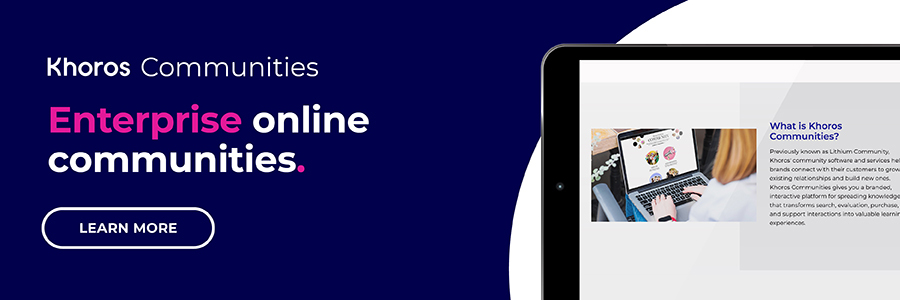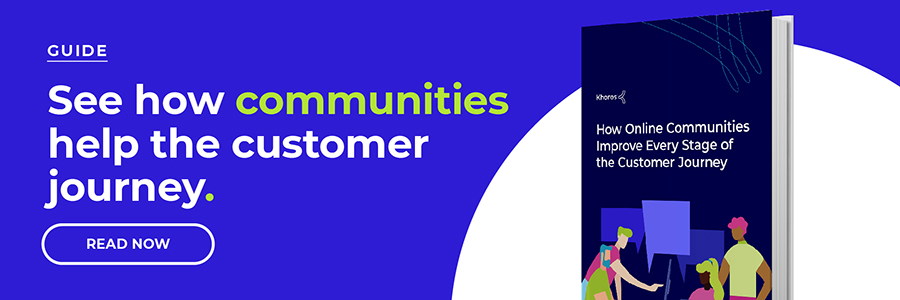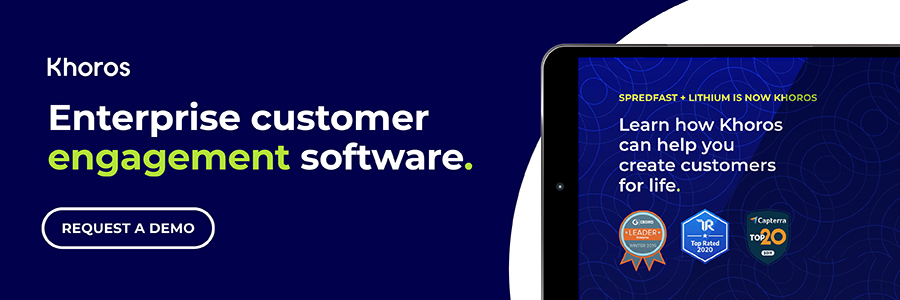 Logo
Logo
EXPERT INSIGHTS
Oct-06-2020
Losing too many customers? A community can help
Jackson Kushner
Every lost customer is a loss in potential recurring revenue. It’s easy to assume you can replace this customer with a new one, but are you really aware of the value you’re losing out on by ignoring customer churn?
Harvard Business School estimates that a 5% increase in customer retention can result in a 25-95% increase in profit. Yet many businesses don’t have a customer retention strategy in place. To create your retention strategy, you must first calculate your churn rate and identify why customers churn. Then, you must implement the changes needed to improve your customer experience.
One way to do this is with the help of online branded communities. Here, we discuss how online communities can improve customer satisfaction and reduce churn.
What is customer churn, and how does it hurt your business?
Customer churn happens when customers stop doing business with your brand. Customer churn and customer churn rate (found by calculating the percentage of customers who cut ties with your brand over a given period of time) are important metrics for your business to be aware of.
This is due to the simple fact that customer acquisition is much more expensive than customer retention; some estimates put the cost of customer acquisition at five times higher than customer retention. According to SmallBizGenius, the average success rate of selling to a new potential customer is only between 5-20%, whereas 60-70% of existing customers will make another purchase. Additionally, customer profitability rates typically increase over time. This highlights how brands are missing out on revenue by not working to retain customers.
Each year, the average company loses about 10% of its customers. Even more strikingly, it’s estimated that U.S. companies lose $136.8 billion each year due to customer churn. However, these losses are preventable. There are numerous tactics for reducing customer churn, the most common involving improving your brand’s customer service experience.
Enter: your brand community
One impactful way to improve your brand’s customer care is through the use of online brand communities. Online communities are brand-owned channels that allow customers to gather to converse, offer or receive support, and provide feedback.

There are three types of online communities:
- Discussion communities
- Support communities
- Action communities
These communities are extremely valuable to customers and brands alike. Online communities create a direct line of communication between brands and customers, which helps improve customer experience and satisfaction. In a study by Microsoft, 90% of customers said it was important to them to be able to provide feedback to businesses, but only 24% found that they were regularly given this opportunity. Customers who feel that they are heard are more likely to be loyal to your brand and become advocates, which positively impacts your bottom line.
To learn more, read our blog on the 12 features of a successful online community.
3 ways to prevent customer churn with communities
1. Use data to analyze why customers leave and which segments are most at-risk
One of the benefits of branded communities is the wealth of data they store. You can use this data to help determine why customers churn and identify customer segments that are the most at-risk for leaving. This is one of the most impactful customer churn prevention strategies because it increases customer retention by giving brands actionable insights they can use to improve their customer experience.
In an online community, you can identify at-risk customers in a few ways. Most obviously, customers that leave angry or dissatisfied comments and messages are more likely to be a part of your at-risk customer segment. These messages are direct indications of problems customers are having, however not all customer churn warning signals are as clear.

With technology that takes advantage of AI and machine learning, you can track customer sentiment to identify not just where and how often these comments occur, but also how best to address them. For example, if one particular section of your community continues to get angry comments, it might be a good idea to highlight whatever that section deals with in the customer onboarding process. Individual solutions will, of course, vary — but it is important to track this information so that you can deploy one before customer issues escalate.
Another way to identify potential churn risks is to look for community posts that don’t receive answers. The poster may be out of touch with the rest of the community, which can lead to frustration — and eventually, churn. You can mitigate this kind of issue by linking your community to a support case portal, so you can see interaction on customer posts alongside the customer support history through traditional support request tickets.
Customers who ask very simple questions in your community may also be at risk of churn, as this might mean that you aren’t providing them with the basic information they need. If you’re noticing basic questions being repeated again and again, it’s a good idea to highlight that area when you onboard customers, to avoid that confusion in the future. Similarly, customers who are inactive in your community may also be at-risk. Inactive customers are likely less interested in your brand’s offerings and, therefore, are more likely to churn. Of course, advanced tracking features, such as those offered by Khoros Communities, can help identify these customers so that you can intervene before they churn.
There are many ways to track this kind of information.
2. Provide valuable content to customers
If you find that customers are repeatedly asking simplistic questions or are unengaged with your brand, you might not be providing them with the right content. Customers want to access the information they need with as little effort as possible. If a customer has to go out of their way to interact with a brand’s support agents for every minute detail about a product or service, then they aren’t getting a great customer experience.
Online communities are a great place to house informational content about your product or service. This content can be added directly by brands, but user-generated content can also be a great source of information for other customers. Customers can ask more complex questions in an online community, and other members will do their best to answer them. This not only helps the particular customer who asked the question, but also helps customers who may have the same question in the future.

Another way to get insight about what customers are using your community for (and what they want to use it for) are surveys of community visitors to find out if their visit was successful. This is a feature included in all Khoros communities called Value Analytics. It’s an important metric because it measures whether your community is actually solving the problems it purports to solve. You can learn more about Value Analytics in our recent blog post on the topic.
The content shared in an online community can also improve your engagement rates. Customers who are more engaged are more likely to stay customers, or even become brand advocates.
3. Find and reward top customers
An undeniable fact about customers, is that they want to feel valued. It’s also true that customers who feel valued are less likely to churn.
An online community can go a long way towards engaging community members and making them feel valued. Online communities can take advantage of user recognition features to shine a spotlight on their most invested customers.
Recognition systems are a form of gamification. Gamification involves applying the typical elements of game play to other activities. Features such as titles or badges for engaged customers highlight their authority to other users, thus making them feel important and valued to both the community and brand as a whole. In response, other users will also want that level of recognition and become more engaged in the community. In addition to recognition, you can offer higher ranked users special privileges, such as more direct interaction with product teams and executives, or the ability to own certain areas of the community to build their own businesses (if they are consultants) or establish a strong reputation in the industry.
This ultimately bodes well for the brand because engaged customers tend to have higher profitability rates. The oft-quoted Pareto principle (20% of your customers are responsible for 80% of your revenue) is a good example of this, since these highly-engaged customers are more likely to be within that 20%.
To learn more about gamification tactics in communities, see our blog, what is gamification in 2020?
Reduce your customer churn rate with Khoros Communities
Khoros Communities gives you a branded, interactive platform for spreading knowledge that transforms search, evaluation, purchase, and support interactions into valuable learning experiences. This helps you grow authentic relationships with your customers, leading to increased customer retention and satisfaction, and ultimately, revenue.
Over 400 of the world’s largest brands trust Khoros Communities to enhance nearly every aspect of their businesses. Want to know more? See how Dr. Pierre Ricaud attracted 55,000 new community members with the help of Khoros Communities, or view our other case studies for more customer examples.












